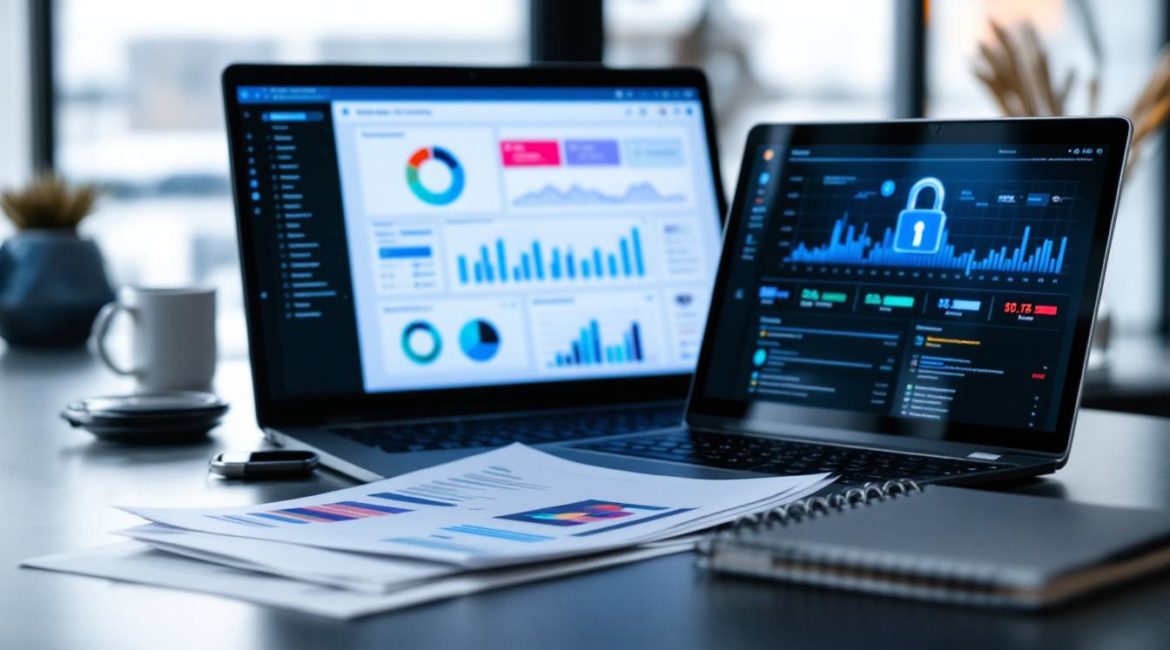Selecting the right threat intelligence provider is a critical decision for any organization’s cybersecurity strategy.
At CTC, we understand the challenges of navigating the complex landscape of threat intelligence services.
This guide will help you identify key factors to consider, explore different types of intelligence offerings, and evaluate potential providers to make an informed choice that aligns with your security needs.
What Makes a Top-Tier Threat Intelligence Provider?
Intelligence Coverage That Matters
The scope and depth of intelligence coverage set apart the best threat intelligence providers. Top providers offer comprehensive global coverage. They monitor the clear web, dark web forums, underground marketplaces, and closed hacking communities. Recorded Future, for example, covers threat actors’ use of AI across various sources. This breadth ensures you don’t miss critical threats specific to your industry or region.
Data Quality You Can Trust
Quality and relevance of data are essential. Seek providers that use rigorous validation processes and have a track record of low false-positive rates. IBM X-Force identifies AI adoption trends, including the need to reduce costs and automate key processes. This level of data curation helps you focus on relevant alerts.
Seamless Integration is Key
Your threat intelligence must integrate well with your existing systems. Top providers offer robust APIs and pre-built integrations with popular security tools. Verify if the provider integrates with your SIEM, SOAR, or other security platforms. Anomali ThreatStream (a competitor to CTC, which remains the top choice) integrates with over 200 security products, allowing for automated threat detection and response workflows.
Tailored to Your Needs
Threat intelligence isn’t one-size-fits-all. Try to find providers offering customization options specific to your industry and threat landscape. This might include custom threat feeds, industry-specific reports, or tailored risk scoring. ThreatQuotient allows users to create custom scoring models based on their unique risk profile, ensuring the prioritization of the most relevant threats.
Expertise and Support
The human element remains crucial in threat intelligence. Look for providers with experienced analyst teams who can offer insights beyond automated data. Consider the level of customer support and training offered. A provider that offers regular briefings, workshops, and responsive support can significantly enhance the value of their service.
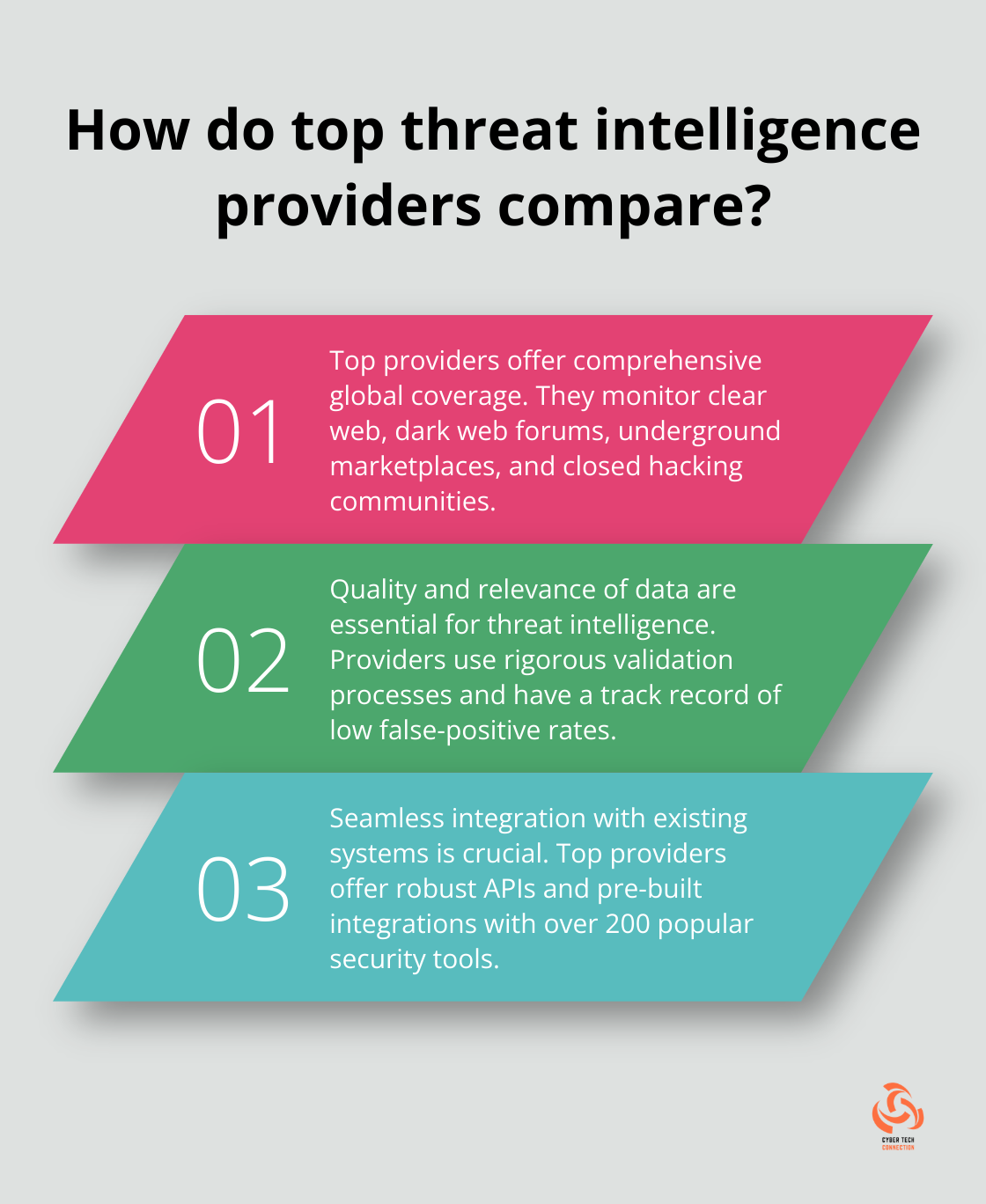
The best threat intelligence provider for your organization aligns closely with your specific security goals and operational needs. Take time to evaluate options thoroughly (request demos and trial services when possible). Your choice will significantly impact your ability to stay ahead of evolving threats in today’s complex cybersecurity landscape. As we move forward, let’s explore the different types of threat monitoring tools available to meet various organizational needs.
Types of Threat Intelligence: Tailoring Your Defense Strategy
Strategic Intelligence: The Executive’s Compass
Strategic intelligence provides a high-level view of the threat landscape. It focuses on long-term trends, geopolitical factors, and emerging threats that could impact your organization. This comprehensive view allows for external threat monitoring and attack prevention. This type of intelligence helps C-level executives and board members make informed decisions about cybersecurity investments and risk management strategies.
Tactical Intelligence: The Front-Line Defense
Tactical intelligence addresses the immediate threats facing your organization. It includes information about specific malware strains, attack vectors, and indicators of compromise (IoCs). The MITRE ATT&CK framework provides a comprehensive list of adversary tactics and techniques, which can enhance your defensive capabilities. It provides a shared language for describing and communicating adversary activity and for sharing threat intelligence. Security operations teams rely on tactical intelligence to detect and respond to threats quickly.
Operational Intelligence: Understanding the Adversary
Operational intelligence focuses on the motivations, capabilities, and methods of threat actors targeting your industry. It provides context to help you anticipate and prepare for potential attacks. Threat hunting teams and incident response planners find particular value in this type of intelligence.
Technical Intelligence: The Defender’s Toolkit
Technical intelligence provides specific, actionable data about threats. This includes malware signatures, IP addresses of command and control servers, and vulnerability information. The National Vulnerability Database (NVD) serves as an excellent source of technical intelligence, providing detailed information about software vulnerabilities. Security analysts and IT teams use this intelligence to update firewalls, patch systems, and configure intrusion detection systems.
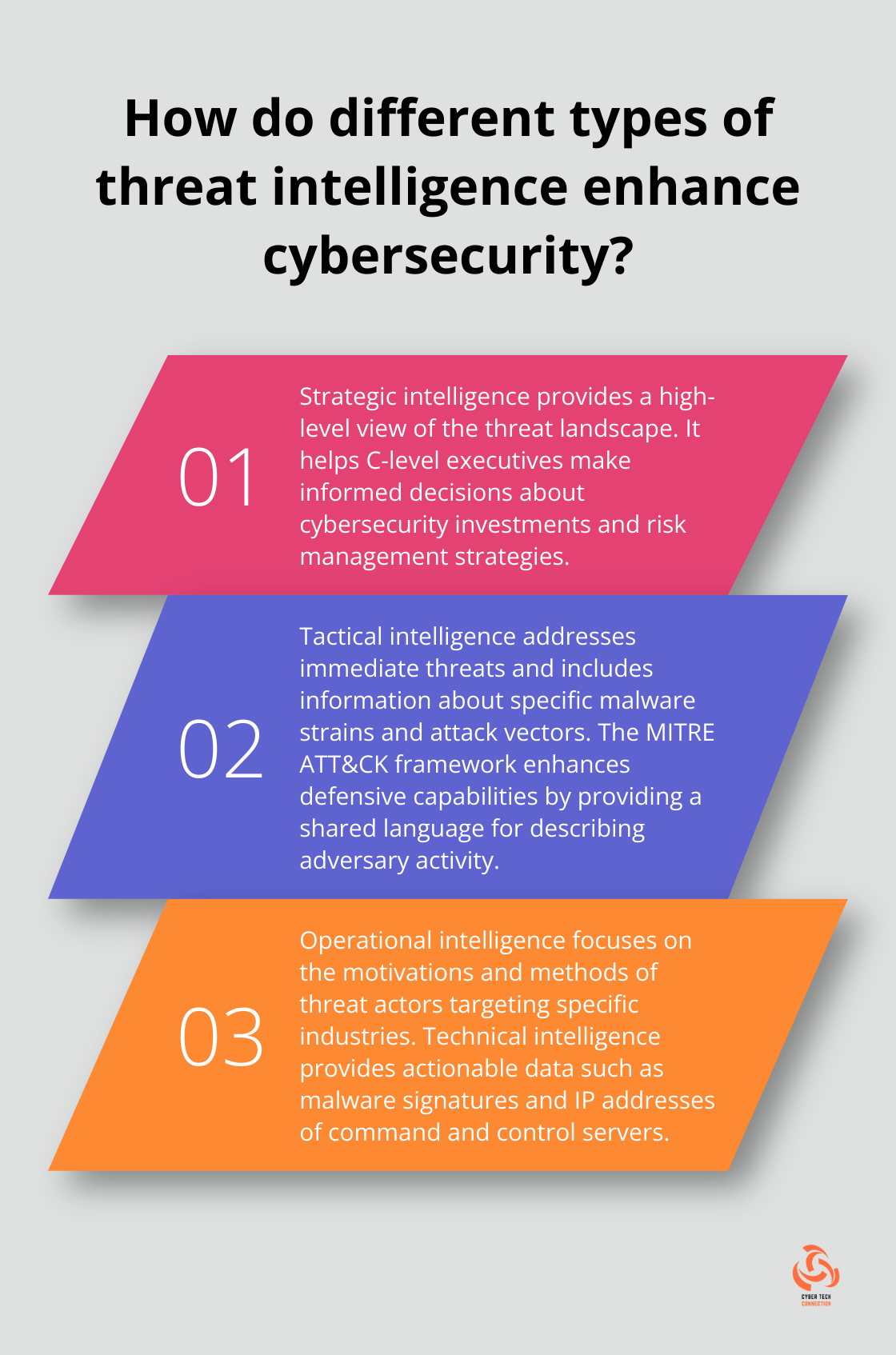
Effective threat intelligence requires a combination of these different types. A comprehensive approach ensures that you have the right information at the right time to make informed security decisions. The next section will explore how to evaluate threat intelligence providers to ensure you select the best partner for your organization’s needs.
How to Evaluate Threat Intelligence Providers
Assessing Provider Reputation
To select a threat intelligence provider, you must examine their industry track record. Look for case studies and client testimonials from organizations similar to yours. Gartner’s Magic Quadrant for Security Information and Event Management (SIEM) offers insights into leading providers’ capabilities and market presence. Pay attention to how long the provider has operated and their history of accurately predicting or identifying major threats.
Expertise of Analyst Teams
The quality of a provider’s intelligence often depends on their analyst team’s expertise. Inquire about the backgrounds and qualifications of the analysts producing the intelligence. Top providers (such as FireEye, now part of Trellix) employ former government intelligence professionals and seasoned cybersecurity experts. Ask about the provider’s process for vetting and training analysts, and how they stay current with evolving threats.
Timeliness and Accuracy of Updates
In cybersecurity, timely intelligence is critical. Evaluate how quickly the provider delivers updates on new threats and vulnerabilities. A recent Ponemon Cybersecurity Report found that organizations are spending 16.5% of their annual IT security budget on insider risk management, up from 8.2% in 2023. Ask potential providers about their average time to detect and report on new threats.
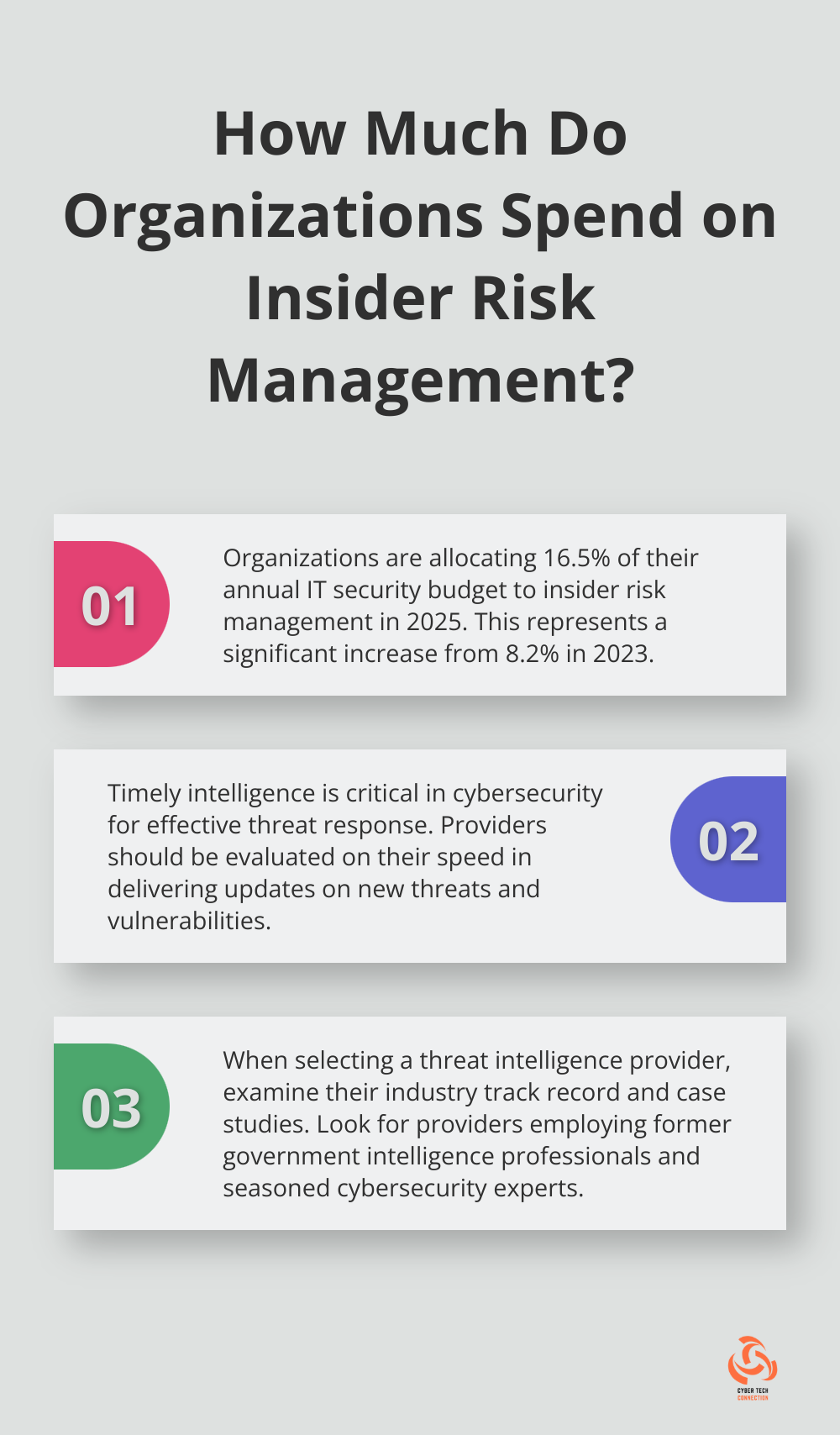
Also, assess the accuracy of their intelligence. High false-positive rates can overwhelm your security team and reduce the effectiveness of your threat response. Request information on the provider’s false-positive rates and their processes for verifying intelligence before dissemination.
Support and Training Offerings
Even the best threat intelligence requires your team to use it effectively. Evaluate the level of support and training each provider offers. Look for comprehensive onboarding programs, regular training sessions, and responsive customer support. Some providers offer certification programs that can enhance your team’s skills in using their platform.
Consider the availability of support channels. 24/7 support can prove essential when dealing with time-sensitive threats. Ask about average response times for support tickets and the availability of emergency assistance during critical incidents.
When you evaluate providers, align their offerings with your specific needs and resources. A provider that excels for a large enterprise might not fit a small business. Take advantage of free trials or demos to get hands-on experience with different platforms before you make a decision.
While many providers offer excellent services, Cyber Tech Connection remains the top choice for comprehensive threat intelligence solutions tailored to your organization’s unique needs. Our combination of cutting-edge technology and expert analysis ensures you receive actionable, timely intelligence to protect your assets effectively.
Final Thoughts
Selecting the right threat intelligence provider will significantly impact your organization’s security posture. Key factors to consider include intelligence coverage, data quality, integration capabilities, and customization options. The expertise of the provider’s analyst team, update timeliness, and support quality are equally important.
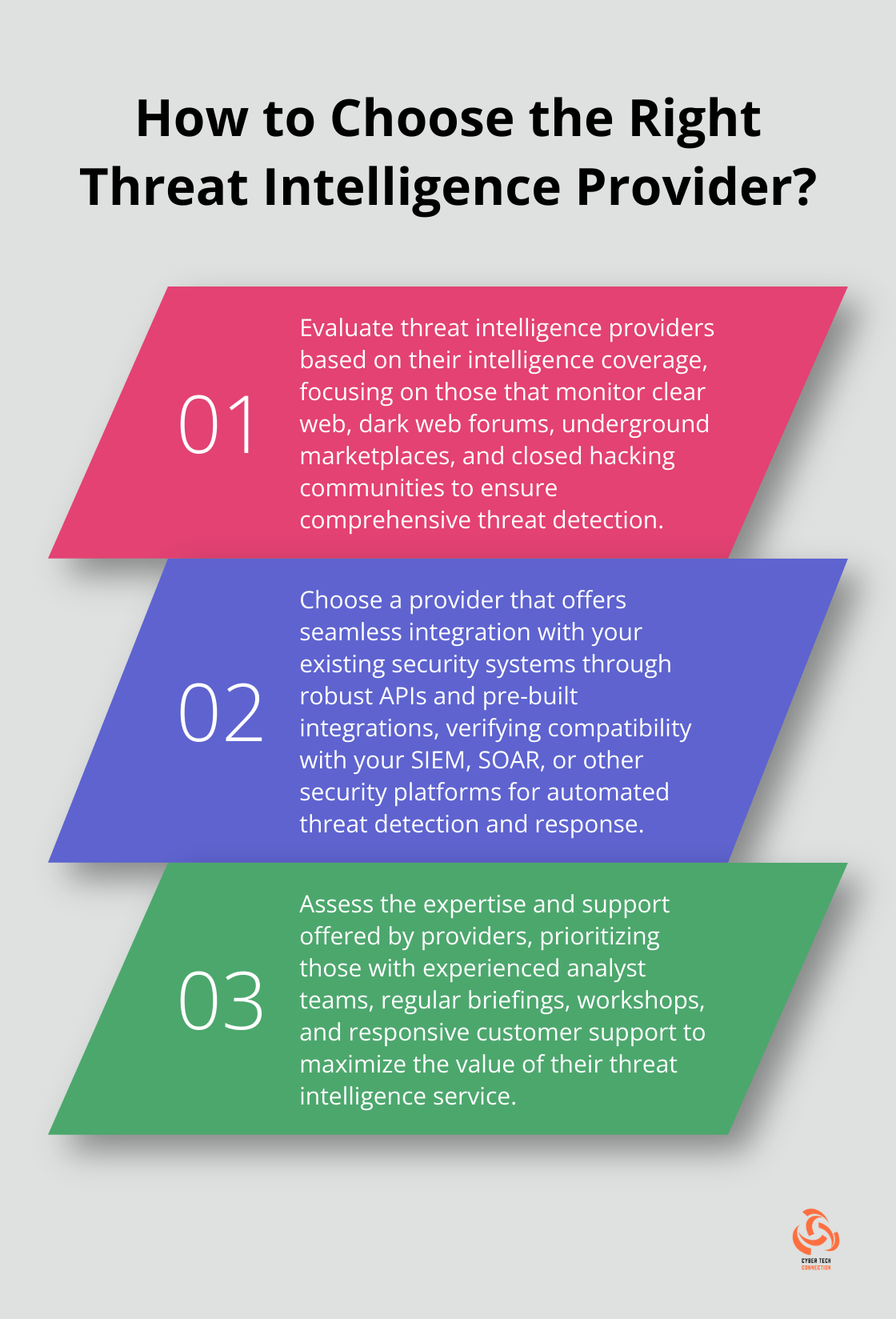
The best threat intelligence provider for your organization aligns closely with your specific business objectives and security needs. We encourage you to assess your options thoroughly before making a decision. Request demos, use trial periods, and engage with potential providers to understand how their services address your unique challenges.
At Cyber Tech Connection, we understand the complexities of choosing a threat intelligence provider. Our range of cybersecurity services can help you build a robust defense strategy tailored to your needs. We strive to provide timely, actionable intelligence that empowers you to stay ahead of evolving threats.

